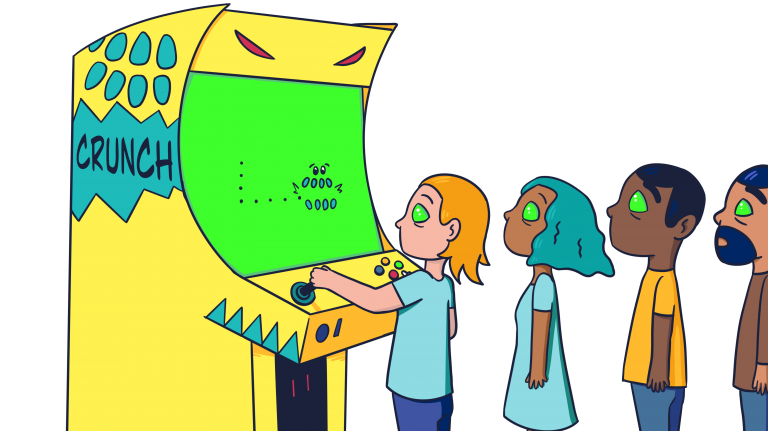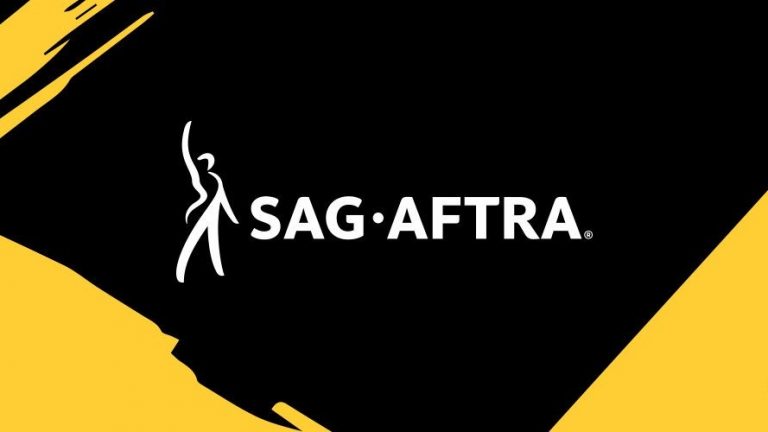How to Avoid Crunch (And What to Do if You Can’t)
Crunch is an ugly monster that eats time, money, and energy; then spits out buggy games and unhappy employees!
In light of our CEO Martin’s upcoming panel at PG Connect, I thought now would be a good time to take a look at one of his previous talks.
For the opening of the social platform for game industry professionals GDBAY, Martin did a talk entitled ‘You Don’t Have to Crunch’
In it, he went over some of the common reasons why Crunch happens, what you can do to avoid it, and, finally, what to do if you can’t avoid it. You can find the full talk below, or read on for my recap of it.
What is Crunch?
Crunch is an issue where employees are required to work excessive hours, often unpaid, in the ramp-up to a major milestone or the release of a game. A situation is usually considered to be Crunch only when overtime has been consistently taking place for longer than two weeks.
Many industries have Crunch in some form, but it’s particularly widespread and often accepted in the games industry. It can easily result in people working 60, 80, or even 100+ hours per week! It often continues for months, and we’ve seen cases where it has lasted for over a year.
Crunch damages people’s mental health, physical health, and personal relationships. Martin mentions in the talk that he has known of people getting divorced due to Crunch.
Here are some quick stats::
- 53% of workers in the games industry believe that their skillset could secure them better wages and conditions in another industry
- The average number of employers for a game developer in a 5 year period is 2.2
- Only one-third of developers remain in the industry for more than 10 years
- Only 18% of developers report receiving overtime compensation
If you want to read more about Crunch, we have written a lot about it.
Why Does Crunch Happen?
Firstly, there are two distinct types of Crunch. Accidental Crunch which is not planned for, and cultural Crunch which is an integral part of a companies development process. The latter kind is just wrong and happens when a company tries to maximize profit without any regard for their employees as people. In this article, we are focusing on the former kind which can be predicted, and with effort, avoided.
Something to remember is that the games industry is one just coming out of its infancy. The industry has proven it’s good at making fun games, it just hasn’t always proven that it’s good about how it makes those games. Teething problems like Crunch tell us that the industry is still in a period of discovery.
There can be a lot of small specific reasons that Crunch happens. But we’ve generally found that most occurrences of Crunch have one or more of the following broad issues in common.
- Piss Poor Planning
- Scope Creep
- Poor Communication
In our next section, we discuss how to tell if you might be suffering from these or related issues.
How to Predict Crunch
Let’s take a look at some of the things you can watch out for in order to tell if you’re likely to Crunch.
The following points are from Martin’s talk. If you want a much more detailed rundown of this topic, we wrote a whole article about it.
Iteration is Key

The development of games is inherently an iterative process. However, that does not always turn out to be the case in practice. Iterating responsibly is one of the best ways to avoid getting towards the end of development and realizing that the game you are making is not actually fun, something that happens more often than you would think.
In the talk, Martin walks through two specific examples of times in his career where managers tried to take a ‘shortcut’ that would allow them to circumvent the iterative process.
The first example involved a manager who recommended iterating on one aspect of the game (in this case a character) until it was ‘done’ so that they could then integrate it with the rest of the game to see how it works. Rather than integrating it as early as possible in order to see if the concept made sense, before spending resources on building it out.
The second example was a CEO who claimed his preferred strategy was to ‘Get things right the first time” A statement that ignores the fundamental principles of iterative design.
Ideally, what you should be doing, for maximum effectiveness, is building something and then walking away from it. Get your eyes off it for a while. Then, let someone else test it, preferably someone who is completely naive about what you built. Come back later, get actionable feedback on it, and iterate on the design from there. Then repeat until you run out of time or money.
Communicate Well

A lot of issues in production come down to poor communication, and Crunch is no exception.
One of the worst things you can hear someone say when being asked to do something is “That’s not my job.” It may be the case, but it should not be the answer. Juggling an issue between departments is tantamount to tossing a ticking time bomb back and forth. The problem being, that bomb will eventually go off in someone’s face.
Issues getting chucked back and forth is a symptom of poor communication, but when it happens regularly, it becomes a responsibility problem. The question becomes about who rather than how. ‘Whose responsibility is it?’ rather than ‘How do we get this done?’ The situation devolves into finger-pointing when what you really need is collaboration.
As a team, it’s almost always better to break down the walls between departments and this kind of behavior only serves to fortify those walls.
As a leader, if you see this kind of behavior, you need to get the people involved to sit down and talk it out.
Eliminate Your Bottlenecks
Just as important is the need to be vigilant about eliminating bottlenecks. Far too often, teams live with bad workflows because they claim they ‘can’t afford’ the development time needed to build the tool to fix it.
Martin gives an example of a game he worked on where designers had a spreadsheet that defined all the parameters in that game such as damage, search distance, aggro propagation, etc, for every enemy. Whenever the designers changed one of those parameters, they had to go into the engine and update the stats manually. Because the game had thousands of enemies, the designers ended up doing hundreds of hours of data entry over the course of the project, keeping numbers updated in two locations which often also fell out of sync with each other.
This was compounded by the fact that, because the work was so unpleasant, the designers pushed the task off until there were lots of changes that needed to be implemented at once. Resulting in whole 8 hour+ days spent just transferring a spreadsheet into the engine.
Exasperated, Martin asked the Executive Producer on the game “Why don’t you have a developer build a parser (a tool which takes data and translates it into a form which can be read by another system) and import that data from the spreadsheet and populate based on the enemies in the first column?” The producer responded by saying “We considered it but it would take a dev half a day and engineering is our most valuable resource”
In response, Martin asked the Producer to see how much the Engineers were getting paid?
The cost-benefit was huge! The team was spending thousands of dollars in man-hours per month, on a problem that would have cost them less than $300 to solve.
And the reality is, there are so many opportunities like the one above to improve efficiency in most production pipelines.
One major issue is that most projects only build tools during pre-production. Instead, you should be breaking periodically to build tools at different points over the course of a production cycle.
How to Combat Crunch
Now we’ve talked about some of the pitfalls to look out for. Let’s talk about some of the proactive steps you can take to prevent Crunch.
The Scotty Principle

As mentioned earlier, piss poor planning is one of the biggest causes of Crunch. Don’t worry though, It’s a lot more common than you might realize.
There is something called the Planning Fallacy which is defined as the tendency to “underestimate the time, costs, and risks of future actions and at the same time overestimate the benefits of the same actions.”
If you haven’t heard of that, you might have heard of a related adage called Hofstadter’s Law which states ‘It always takes longer than you expect, even when you take into account Hofstadter’s Law.’
Luckily, we have a way to negate our innate weakness for accurate estimation, and that’s The Scotty Principle. We wrote a whole article on The Scotty Principle and I advise you read it. But in short, from that article:
The Scotty Principle (also known as The Scotty Effect or The Scotty Factor) is the technique of adding extra time to your estimates when asked how long a task will take so that you appear to be a wizard when you accomplish the task quicker than you first claimed.
Martin explains briefly in his talk how to implement The Scotty Effect for maximum… uh… effect. But if you want to read about it, I would really advise you to head over to the full article. Seriously, it’s worth it.
One thing you won’t find in that article is advice on taking into account meetings and other time-sucks throughout the day. Specifically, Martin talks about people’s tendency to assume that the most experienced people on your team will have the most agility. When in reality, they often have the least.
Even if, for example, a lead or a creative director can accomplish a task in half the time of an entry-level worker. You still have to assume they will accomplish it in the same amount of time or less. The reason being that they have the most demands on their time. They have to attend most meetings, deal with administrative tasks and are constantly being interrupted and asked questions throughout the day. Their ability to multi-task and switch focus quickly makes them effective managers, but it also makes them less efficient overall.
Marketing is a Bad Driver
Another issue we mentioned earlier is scope creep. Scope often happens organically because people want to make a great game and add in as many features as they can. But there is another cause of scope creep is when you are forced into adding features.
One way that happens is through marketing. Marketing loves back of the box features, that’s how they sell games. The result is that you can get into a situation where a marketing guy on stage says something and everyone on the team winces and asks “Do we have to build that now?”
If you’re questioning whether that happens. Take a look at the below video about the making of Horizon Zero Dawn where Angie Smets mentions that exact situation happening.
If you want more examples, we wrote a whole article about the problems that can arise between marketing and production.
It’s also important to mention that we are not trying to vilify marketing. Marketing is an important element of making a game profitable and they deserve a voice at the table. But it’s also important that they know what they’re selling and that you help them manage expectations.
What you don’t want is a marketing professional saying “I don’t need to know what I’m selling, just how to sell it.” Statements like that are a huge red flag and if you hear that, you should probably consider replacing the person who said it.
Think Differently
The industry as a whole is adopting a cultural shift in thought and deed. That has to continue. Let’s take a look at where we still have room for improvement.
2/3rds of the world do not currently have a mechanism in place to deal with harassment or abuse, of which Crunch is a form.
88% of the industry is in the US, Australia, And Europe. Even if you assume that everyone else definitely doesn’t have those protections in place there’s still 54% unaccounted for. At this point, given our history, we should be doing better.
The belief that it’s ok to pay people poorly, treat them badly, and generally treat them as a commodity is slowly dying off. More and more of the industry is standing up for itself and saying “We want work-life balance.” In order to allow that to happen, we need to fundamentally shift the way we think so that we stop working in ways that trap us in cyclical Crunch.
An example Martin uses in his talk is the first time he was a lead on a project where he said to a producer “We have some really awesome engineers.” when he got the reply “Really? I see them watching cartoons all day long, it seems really unprofessional”
Martin explained that the reason they were watching cartoons all day long was that they were in the office 14 to 16 hours per day and they needed the outlet. In fact, it was the previous periods of Crunch that had caused them to develop self-destructive habits which meant that even when they weren’t Crunching, they still conformed to those comforting patterns of behavior.
What to Do if You Have to Crunch?
So, you were unable to avoid Crunching and now you have to make the most of it, what do you do? We wrote a whole set of guidelines for how to Crunch ethically. But, from that article, you can find our guidelines below:
- Avoid layoffs
- Keep Crunch periods short
- Make it optional
- Pay over time
- Lead from the front
- Safeguard your employees mental and physical health
Also, shameless plug, you could always hire us. We have put a lot of effort into figuring out how to help teams to avoid Crunch, both through consulting, but also through team augmentation. You can find out how we can help here.
We hope that the Martin’s talk and the above advice gave you some insight into why Crunch happens and how to avoid it.
If you have any questions that were not answered above, feel free to ask in the comments below.






